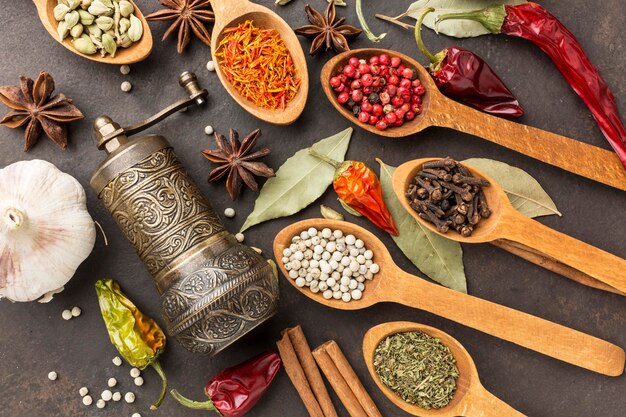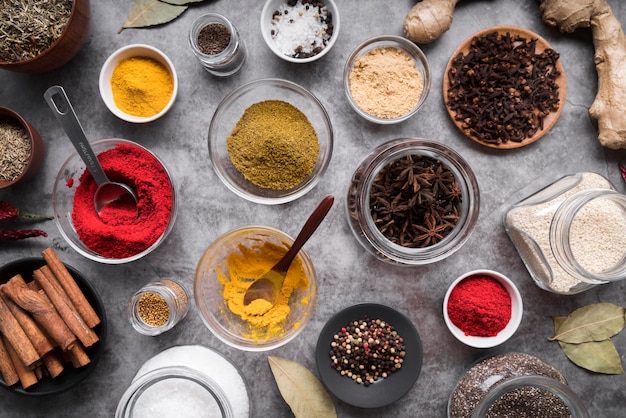Ask Ayurvedic doctor a question and get a consultation online on the problem of your concern in a free or paid mode. More than 2,000 experienced doctors work and wait for your questions on our site and help users to solve their health problems every day.
Shop Now in Our Store
Virechana Dravya: A Comprehensive Ayurvedic Detox Guide

Digestive health has always been central to overall well-being, but did you know that some traditional practices—like Virechana Dravya therapy—have been explored by modern researchers for their potential in cleansing the gastrointestinal tract? According to the World Health Organization (WHO), digestive disorders contribute significantly to global morbidity rates. Meanwhile, integrative health practitioners emphasize the role of balanced gut health in preventing chronic ailments. This article aims to bridge the gap between ancient Ayurvedic wisdom and contemporary scientific findings, offering an evidence-based understanding of how Virechana Dravya may support holistic health.
Disclaimer: This article provides general information and should not be taken as medical advice. Always consult a qualified healthcare professional before making any changes to your health regimen.
Table of Contents
What Is Virechana Dravya?
Virechana Dravya refers to substances (primarily herbal or mineral formulations) used in Virechana, the purgation therapy in Ayurveda. Virechana is one of the five major procedures of Panchakarma, a traditional Ayurvedic detoxification system. Purgation is employed to expel toxins, particularly targeting the pitta dosha, which is associated with metabolism, digestion, and heat regulation in the body.
Key Points:
-
Primary Goal: Eliminate excess pitta-related toxins and improve digestive balance.
-
Historical Use: Dates back thousands of years in Ayurvedic texts such as the Charaka Samhita and Sushruta Samhita.
-
Modern Adaptations: Modified protocols exist to cater to contemporary lifestyles and medical conditions.
While Ayurveda frames these therapies in the language of doshas and agni (digestive fire), modern interpretations focus on their potential to support gut health, metabolic functions, and even mental well-being through the gut-brain axis.
How Virechana Dravya Works in Ayurveda
In Ayurveda, the human body is seen as a holistic network of various systems working in harmony. Imbalances in vata, pitta, or kapha can lead to disease. Virechana specifically focuses on addressing pitta imbalances. The therapy typically involves:
-
Preparatory Phase: Known as Purva Karma, including snehana (oil intake or massage) and swedana (therapeutic sweating).
-
Main Procedure: Administration of specific herbal formulations that induce controlled bowel movements to eliminate toxins.
-
Post-Care: Also called Paschat Karma, which involves a specialized diet and lifestyle guidelines to consolidate the benefits of the cleanse.
Mechanism:
-
Lubrication: Preparatory steps help loosen toxins stored in tissues.
-
Purgation: Virechana Dravya triggers bowel movements, purging out unwanted substances.
-
Restoration: Post-therapy care rebalances the digestive system, encouraging healthy gut flora and digestion.
Commonly Used Virechana Dravyas
Ayurvedic practitioners personalize Virechana Dravya based on individual health assessments. Nevertheless, several dravyas are widely recognized:
-
Triphala
-
A blend of three fruits: Amalaki (Emblica officinalis), Bibhitaki (Terminalia bellirica), and Haritaki (Terminalia chebula).
-
Traditionally believed to improve digestion, support liver function, and act as a mild laxative.
-
-
Avipattikar Churna
-
A popular herbal formulation consisting of various ingredients like ginger, black pepper, and long pepper.
-
Traditionally used to relieve acidity and aid gastric functions.
-
-
Eranda (Castor Oil)
-
Known for its strong purgative properties.
-
Often used in conditions involving the joints and skin, linked to pitta imbalance in Ayurvedic literature.
-
-
Trivrit (Operculina turpethum)
-
Often referred to as “Turpeth Root,” recognized for its potent laxative properties.
-
Traditionally indicated for chronic constipation, skin disorders, and high pitta conditions.
-
-
Aloe Vera Juice
-
Contains anthraquinones, which may exert a laxative effect.
-
Used in certain Ayurveda-based protocols for a gentler purgation.
-
Each herb or formulation varies in potency, so the choice of dravya—and its dosage—is best tailored by a qualified Ayurvedic practitioner.
Scientific Perspectives and Research
While Ayurveda dates back millennia, modern interest in Virechana Dravya has been steadily growing. In the last two decades, researchers have begun to scrutinize these traditional substances for their biochemical and physiological impacts.
-
Gut Microbiome Studies: Some researchers suggest that herbal purgatives may modulate gut flora. A 2018 study in the Journal of Alternative and Complementary Medicine (PubMed ID: 29944371) found that certain Ayurvedic herbal formulations, including Triphala, influenced beneficial gut bacteria and improved gastrointestinal health in test subjects.
-
Anti-Inflammatory Effects: Several botanicals commonly used as Virechana Dravya—such as Emblica officinalis and Terminalia chebula—have demonstrated anti-inflammatory and antioxidant properties in laboratory studies (Source: Pharmacognosy Reviews).
-
Detoxification and Metabolic Health: Preliminary evidence points to potential benefits in metabolic syndromes. A small 2020 pilot study published in an integrative health journal suggested that participants undergoing a short-term Panchakarma regimen showed improvements in lipid profiles and inflammatory markers.
Note: While these findings are promising, more large-scale, randomized controlled trials are needed to confirm the long-term safety and efficacy of Virechana Dravya.
Benefits and Potential Applications
Beyond detoxification in the traditional Ayurvedic sense, emerging research hints at several broader applications:
-
Digestive Support
-
Constipation Relief: Herbal purgatives like castor oil and Triphala can stimulate bowel movements.
-
Acidity Control: Formulations such as Avipattikar Churna are commonly used to manage hyperacidity.
-
-
Metabolic Health
-
Weight Management: Some practitioners integrate mild laxatives and dietary protocols to support healthy weight, although evidence is still preliminary.
-
Blood Sugar Levels: Certain Ayurvedic dravyas might help regulate glucose metabolism, but more human studies are needed.
-
-
Skin Health
-
Traditional texts link skin disorders (e.g., eczema, psoriasis) to pitta imbalance. Virechana may help reduce inflammatory manifestations that appear on the skin.
-
-
Psychological Well-being
-
The gut-brain axis is a growing field of research. Ayurvedic literature hints that cleansing the digestive system can foster mental clarity and emotional balance.
-
Safety, Precautions, and Contraindications
Like any medical or therapeutic intervention, Virechana Dravya must be used responsibly:
-
Contraindications:
-
Pregnancy: Purgatives can induce uterine contractions and are generally contraindicated.
-
Severe Debility: Individuals weakened by illness or chronic conditions need careful assessment.
-
Active Inflammatory GI Conditions: Those with acute ulcers or inflammatory bowel diseases should seek expert guidance.
-
-
Potential Side Effects:
-
Dehydration: Excessive purgation can lead to loss of electrolytes.
-
Nausea or Cramping: Especially if the dosage is not properly calibrated.
-
Fatigue: Common if the individual does not follow post-therapy restorative measures.
-
-
Quality Control:
-
Always source Virechana Dravya from reputable suppliers who test for purity and contaminants.
-
Look for Good Manufacturing Practice (GMP) certifications or consult with healthcare providers for trusted brands.
-
Professional Supervision is recommended. Ayurvedic practitioners typically conduct a thorough assessment of your constitution (prakriti), current condition (vikriti), and medical history before prescribing any purgative.
How to Use Virechana Dravya: Practical Tips
If you are considering Virechana Dravya, preparation, administration, and aftercare are crucial:
-
Pre-Cleanse Routine (Purva Karma)
-
Diet Adjustments: Eat lighter meals, focusing on warm, easily digestible foods like soups and rice porridge.
-
Oil Therapies: Internal oil intake (like ghee in measured doses) helps loosen toxins.
-
-
Administration
-
Exact Dosage: Determined by a practitioner based on age, weight, digestive capacity, and health status.
-
Timing: Often administered early in the morning on an empty stomach, but protocols may vary.
-
-
Monitoring
-
Symptoms: Keep track of bowel movement frequency, color, consistency, and any discomfort.
-
Hydration: Drink plenty of fluids and electrolytes to compensate for fluid loss.
-
-
Post-Cleanse Care
-
Diet Transition: Gradually reintroduce regular foods, starting with liquid diets, then semisolid meals, and finally a balanced diet.
-
Lifestyle Measures: Adequate sleep, light exercise, and stress management support the healing process.
-
FAQs on Virechana Dravya
1. Can anyone undergo Virechana therapy?
While Virechana is generally considered safe when done under supervision, it’s contraindicated in pregnancy, severe illness, or active GI inflammation. Always consult a healthcare provider first.
2. How often should one use Virechana Dravya?
Frequency depends on individual health goals. Some might do an annual or biannual cleanse, while others may require shorter, more frequent interventions for specific conditions.
3. Is Virechana Dravya safe for children?
Ayurvedic texts mention mild laxatives for pediatric use under expert guidance, but it’s crucial to consult a pediatric Ayurvedic specialist or a healthcare professional.
4. What if I experience excessive bowel movements?
Stop taking the Virechana Dravya and consult your practitioner or physician immediately. You may need electrolyte replacement or alternative therapies.
5. Are there modern medical equivalents to Virechana?
Modern medicine uses various laxatives and colon cleansing protocols for conditions like constipation or pre-colonoscopy preparation. While the mechanisms overlap, Ayurvedic purgation is a more holistic approach, integrating diet, lifestyle, and constitutional therapy.
Conclusion and Key Takeaways
Virechana Dravya stands at the intersection of ancient Ayurvedic wisdom and modern scientific curiosity. From its foundational role in eliminating excess pitta to emerging evidence on gut microbiome modulation, these purgative agents offer a unique avenue for integrative health. While promising, they also require expert supervision to ensure safety, proper dosage, and efficacy.
Main Points to Remember:
-
Virechana Dravya is central to Ayurvedic detox and focuses on balancing pitta dosha.
-
Scientific literature hints at potential benefits, particularly in gut health and metabolic functions.
-
Caution is essential: not everyone is a candidate for purgative therapies.
-
Always consult qualified professionals and opt for reputable sources of Ayurvedic formulations.
Call to Action
If you found this article on Virechana Dravya informative, feel free to share it on social media, comment with your own experiences or questions, and subscribe to our newsletter for more evidence-based insights into holistic and integrative health. By staying informed, you can make safer and more effective choices for your well-being.
Disclaimer: The information provided here is not a substitute for professional medical advice. Always consult a qualified healthcare practitioner for personalized treatment plans.
Thank you for reading, and here’s to a balanced, healthier you through the wisdom of Ayurveda and modern science!
This article is checked by the current qualified Dr Sujal Patil and can be considered a reliable source of information for users of the site.



